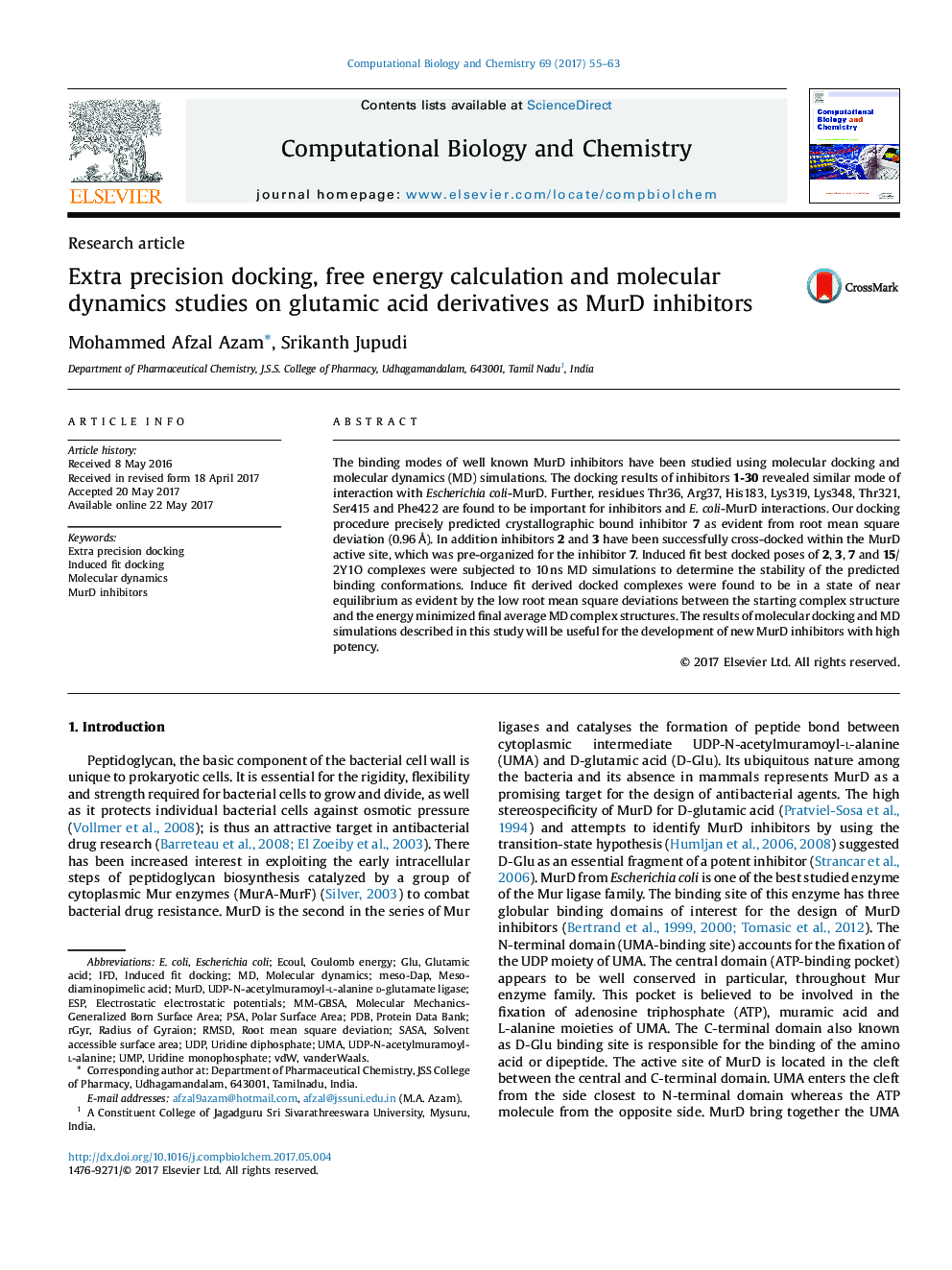| Article ID | Journal | Published Year | Pages | File Type |
|---|---|---|---|---|
| 4752613 | Computational Biology and Chemistry | 2017 | 9 Pages |
â¢Putative binding modes of thirty MurD inhibitors was investigated.â¢Docking, MM-GBSA and 10 ns dynamics simulation are used for this purpose.â¢Van der Waals term is the driving force for ligands binding.â¢MD and ÎGbind results of most potent inhibitor displayed stable and favorable binding.
The binding modes of well known MurD inhibitors have been studied using molecular docking and molecular dynamics (MD) simulations. The docking results of inhibitors 1-30 revealed similar mode of interaction with Escherichia coli-MurD. Further, residues Thr36, Arg37, His183, Lys319, Lys348, Thr321, Ser415 and Phe422 are found to be important for inhibitors and E. coli-MurD interactions. Our docking procedure precisely predicted crystallographic bound inhibitor 7 as evident from root mean square deviation (0.96Â Ã ). In addition inhibitors 2 and 3 have been successfully cross-docked within the MurD active site, which was pre-organized for the inhibitor 7. Induced fit best docked poses of 2, 3, 7 and 15/2Y1O complexes were subjected to 10Â ns MD simulations to determine the stability of the predicted binding conformations. Induce fit derived docked complexes were found to be in a state of near equilibrium as evident by the low root mean square deviations between the starting complex structure and the energy minimized final average MD complex structures. The results of molecular docking and MD simulations described in this study will be useful for the development of new MurD inhibitors with high potency.
Graphical abstractDownload high-res image (221KB)Download full-size image
